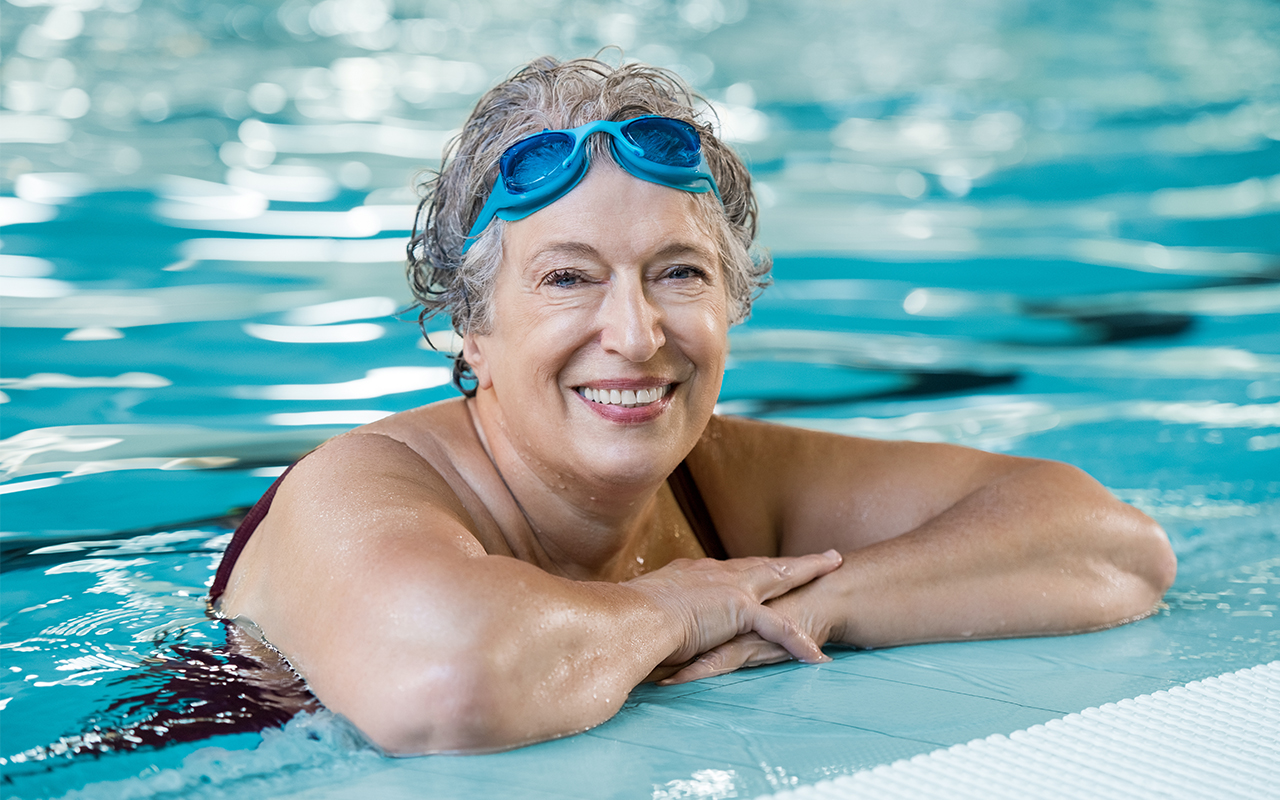Pain Relief for Your Knees and Hips

Many of us think that stiff and painful joints are a natural part of aging. But that’s simply not true. Joint pain is often caused by osteoarthritis, when the cushion between your joints (cartilage) starts to wear away. Talk to your primary care provider (PCP) to see if one or more of these steps can help you feel better.
Lose weight if needed.
Carrying extra weight puts greater strain on your joints. Losing weight is never easy, but even a smaller weight loss can make a big difference. Ask your PCP for help. You can also get help from our BCBSRI Care Management Program at no additional cost.1 To get started, please call 1-844-563-0892 or email care@bcbsri.org.
Walk, bike, swim, and do other low-impact exercises.
If it hurts when you move, it may seem like you should move less. But regular exercise actually helps relieve pain and stops your joints from getting worse.2 Ask your PCP what they recommend.
Consider physical therapy.
If pain is limiting what you can do, a physical therapist can show you specific exercises that help and how to do them safely and most effectively.
Try over-the-counter pain relievers.
Ask your PCP what pain reliever is best for you, how much to take, and what side effects to watch for.
Ask about steroid shots if your pain is severe.
Medicine called corticosteroids can be injected into the joint to help with swelling and pain. It’s important to know that relief only lasts for a short time and the number you can receive a year is limited because of harmful side effects.3 If you and your PCP think this is the right option, they can refer you to a specialist.
What about knee and hip replacements?
While these surgeries are important options for those with serious cases of osteoarthritis, many people experience relief from other treatment. If you and your doctor decide that surgery is the best option, it’s still important to take good care of your joints beforehand—as well as your overall health.
These tips can help improve your chances of a successful knee or hip replacement:
- Don’t smoke.
- Maintain or work toward a healthy weight. Studies have shown that having a high body mass index can increase the risk of complications during surgery.6
- Work with your provider on getting any existing chronic conditions under control.
- Complete physical therapy as recommended.
The 12 weeks following surgery are the most crucial to rehabbing the joint and are the most intense. Following through with a physical therapy program and at-home exercises is a must, and it’s best to avoid opioid pain relievers whenever possible.
Have a post-surgery plan in place
Most surgeons and/or physical therapists will talk with you about what to expect after surgery and what you can do in advance to prepare. This includes changes you can make at home to ensure you recover in a safe environment. If the discussion doesn’t come up, here are some important points for you to bring up so you can get ready, mentally and physically, and improve your outcomes.
- What kind of house you live in can affect how mobile you will be and how you are going to get around once you’re home. Make sure to bring up whether you live on a single floor or have multiple floors or stairs to climb.
- Animals may unintentionally knock you over or cause you to trip, so be sure to mention it in case you need to find temporary care for your pets.
- Ask how long it will be before you can drive and the frequency of physical therapy and follow-up appointments. This will help you make the necessary arrangements.
These tips can also help you avoid a fall (before or after your surgery):
- Add grab bars inside and outside your tub or shower and next to the toilet.
- Make sure your home has lots of light by adding more or brighter light bulbs.
- Keep floors free of clutter or wires that you could trip over. Make sure that all carpets and throw rugs are fastened to the floor.
- Put railings on both sides of stairs.
- Keep frequently used items within easy reach. Many falls occur when reaching for overhead items. Rearrange cabinets or drawers for quick access in preparing meals.
1Care Management is not available for Plan 65 members. If your primary care provider is part of a patient-centered medical home (PCMH), a BCBSRI Care Manager will refer you to the Care Manager at your PCMH. Care Management at your PCMH is offered at no additional cost through your BCBSRI plan.
2Mayo Clinic
3Injectable Corticosteroids | Johns Hopkins Medicine
4Knee replacement - Mayo Clinic
5Hip Replacement: What to Know (webmd.com)
6Obesity, preoperative weight loss, and telemedicine before total joint arthroplasty: a review | Arthroplasty | Full Text (biomedcentral.com)